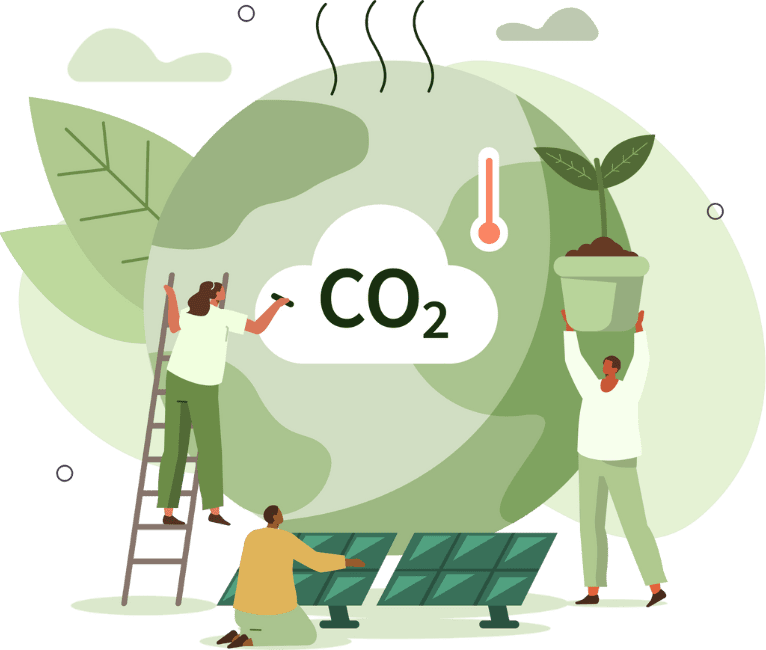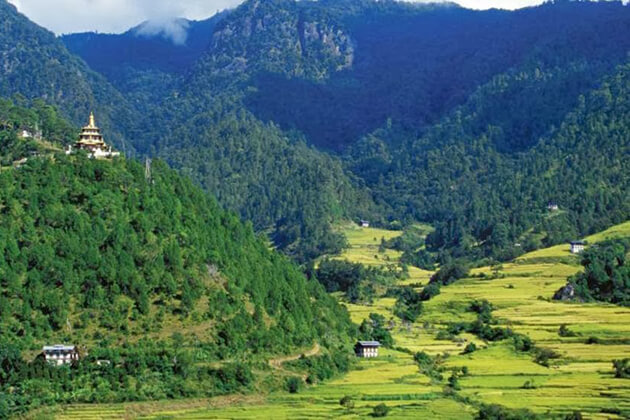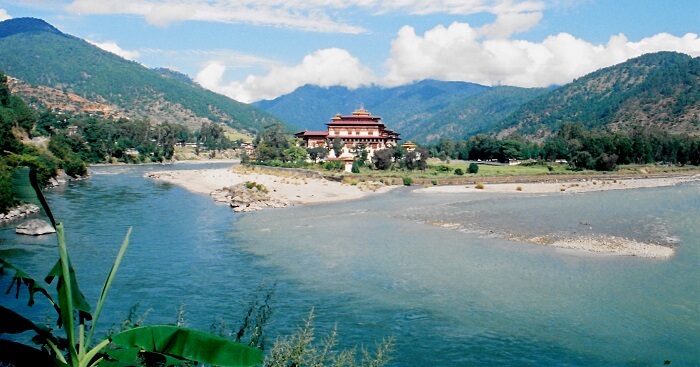Overview
In the heart of the Eastern Himalayas is a nation that values Gross National Happiness over Gross Domestic Product and takes significant strides towards environmental stewardship—Bhutan.

While many countries grapple with the challenges of climate change, Bhutan has emerged as a beacon of sustainability, going beyond carbon neutrality to achieve carbon negativity. This small country has not only recognised the urgent need for climate action. Still, it has also enforced innovative and forward-thinking initiatives that set it apart globally.
Let’s delve into the remarkable journey of Bhutan as it not only treads lightly on the planet but actively contributes to its recovery by becoming carbon-negative.
Firstly, what is carbon-negative?
Carbon dioxide, the primary greenhouse gas from human activities such as farming, forestry, and burning fossil fuels, is a significant player in climate change.

Carbon dioxide establishes a directly proportional link with global warming—basically, the greater the concentration of carbon dioxide in the atmosphere, the more heat is trapped, thereby strengthening the impact of global warming.
Many countries generate more carbon dioxide than the Earth’s oceans and plant life can bear, thereby deteriorating the impact of climate change.
Amid this global challenge, enter Bhutan, a standout in the crowd.
With over 70% of its land covered in trees, Bhutan has become a carbon sink that soaks up more carbon dioxide than it releases. This lush green cover allows Bhutan to absorb approximately seven million tonnes of carbon dioxide each year while its emissions hover around a modest two million tonnes. Viewing the global trend of countries struggling to balance their carbon equation it’s a remarkable feat.

But Bhutan doesn’t stop there. The country is also a champion in exporting renewable hydroelectric power from its rivers. This export powers neighbouring regions and significantly offsets Bhutan’s carbon emissions by millions of tonnes annually. It’s a holistic approach that sets Bhutan on a path of carbon neutrality and active carbon negativity, showcasing a model for sustainable living that the world could learn from.
What is the difference between Carbon-Negative and Carbon-Neutral?
Carbon-Neutral
Carbon neutrality is about balancing carbon emissions and carbon absorption or offsetting. In a carbon-neutral state, the total carbon emissions produced equal the amount of carbon removed or offset through measures like investing in renewable energy projects or purchasing carbon credits.

It’s like breaking even—no net increase in the overall carbon footprint. While it’s a commendable goal, it doesn’t go the extra step of actively reducing the carbon levels in the atmosphere.
Carbon-Negative
On the other hand, carbon-negative goes beyond just counterbalancing the carbon equation—it’s about actively doing more good than harm. In a carbon-negative scenario, an entity goes that extra mile to absorb more carbon dioxide than it emits.
This involves initiatives like extensive tree planting, investing in carbon capture technologies or immersing in projects that actively remove carbon from the atmosphere.
In a nutshell, being carbon-negative is the superhero version of carbon neutrality—it’s not just about maintaining a balance but actively contributing to the healing of our planet.
How did Bhutan achieve Carbon-negative status?
Bhutan’s remarkable journey to achieving negative carbon emissions unfolds with a constitutional mandate dating back to an essential principle established in its constitution. The constitution specifies that a minimum of 60% of the country’s land should be covered by forests, laying the groundwork for stringent conservation efforts.

More than half of Bhutan’s landscape finds protection under the umbrella of national forests, reserves, and wildlife protection zones. These designated areas safeguard biodiversity and serve as strongholds against activities like hunting, mining, and forest pollution.
The roots of Bhutan’s carbon-negative status can be traced back to the international stage. In 2009, during the 15th United Nations Climate Change Conference of the Parties (UN COP 15) in Copenhagen, Bhutan and other member states made a significant promise—to remain carbon neutral for all time. This commitment was reiterated at COP 21 in 2016, solidifying Bhutan’s dedication to environmental sustainability.
To address the challenge of carbon emissions, Bhutan took a multifaceted approach.
One pivotal step involves providing rural farmers with free electricity, a strategic move to discourage the use of wood and promote the adoption of renewable energy sources.

Bhutan’s rivers play a central role, generating an abundance of clean hydropower that sustains the country and is shared with neighbouring nations. Free hydroelectric power, harnessed from the country’s abundant rivers, replaced less environmentally friendly fossil fuels, contributing to reducing carbon emissions.
The commitment to environmentally friendly practices extends to everyday life, with Bhutan subsidising LED lights and collaborating with Nissan on a program to encourage the use of electric vehicles nationwide.
Creating biological corridors connecting protected areas emerges as a visionary initiative, allowing diverse animal species to move freely, adapt to climate change, and thrive in their natural habitats. Bhutan banned log exports, ensuring the preservation of its rich forest cover.
Other Carbon-Negative Countries
Apart from Bhutan, two other countries have achieved the status of carbon neutrality.

Suriname, the second carbon-negative nation and the smallest and least-populous sovereign nation in South America maintains its carbon negativity despite economic reliance on mining for bauxite, gold, and oil. Despite likely mining impacts, Suriname is the world’s most heavily forested country, with estimates ranging from 90-97% forest cover, showcasing a remarkable equilibrium between economic activities and environmental conservation.

Panama, the third carbon-negative country globally, boasts a diverse ecology, with over 65% of its territory covered by rainforests, swamps, and jungles. With more than 33% of its land under protection, Panama is actively reforesting 50,000 hectares by 2050. It has plans to phase out heavy fuels and coal by 2023. Despite its larger population of over four million, Panama is committed to carbon negativity, following in the footsteps of Bhutan and Suriname.
Conclusion
As we applaud Bhutan’s commitment to a green and clean planet, let it resonate as a call to action for all nations. Suriname and Panama, too, joined this league of carbon-negative countries, proving that a harmonious balance between economic prosperity and environmental preservation is achievable. In the tapestry of our shared existence, let Bhutan, Suriname, and Panama inspire a global chorus for a greener, cleaner planet—a collective effort to cherish and protect our Earth, our mother, for generations to come.












Comments 1